#Mexican Muralists
Explore tagged Tumblr posts
Text

Diego Rivera, Weaving, 1936, tempera & oil/canvas (Art Institute, Chicago)
5 notes
·
View notes
Photo
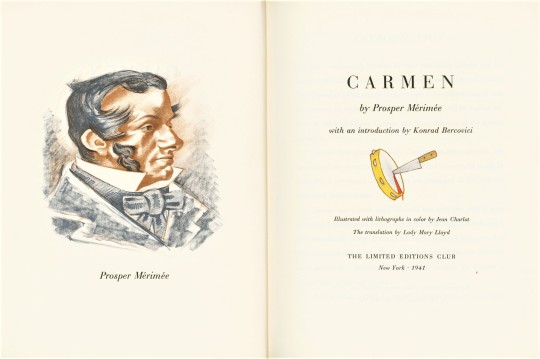
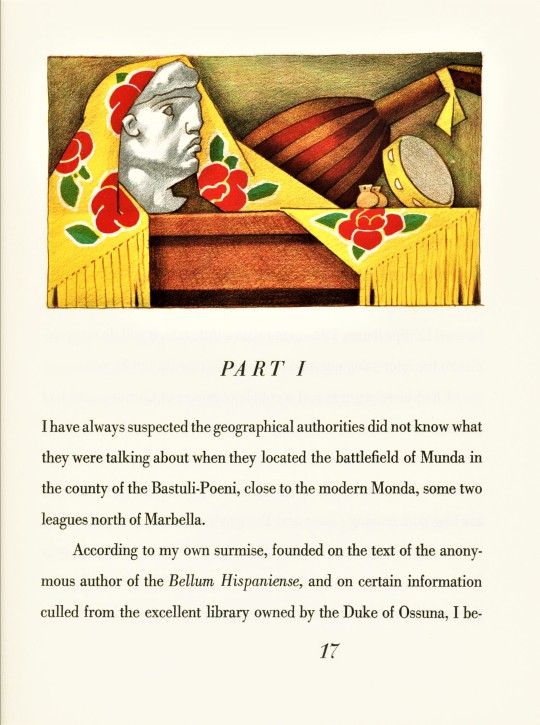

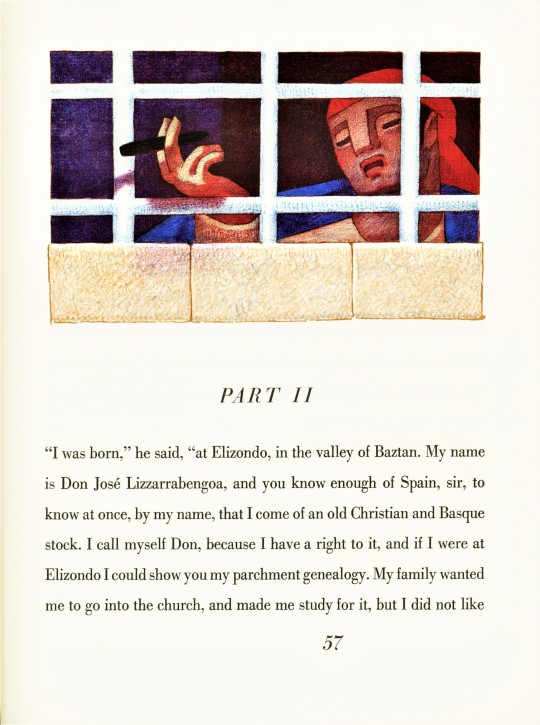



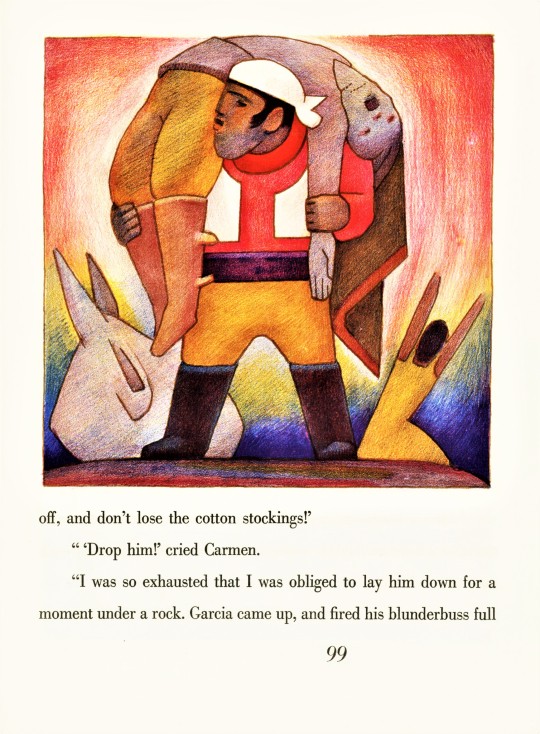
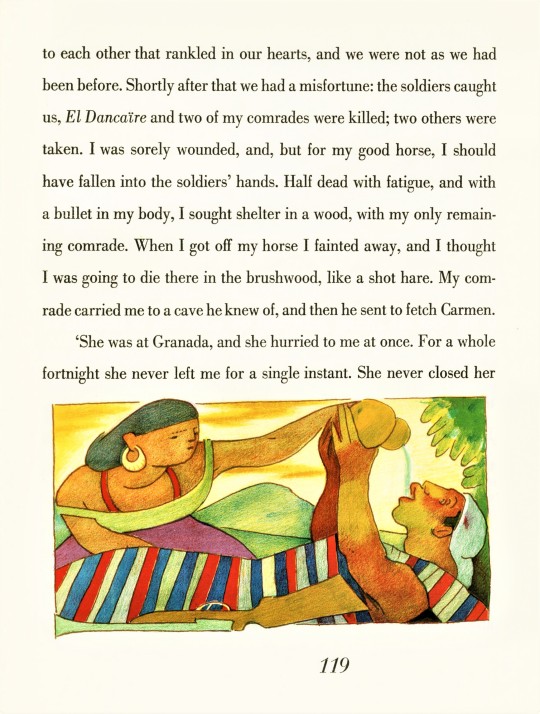
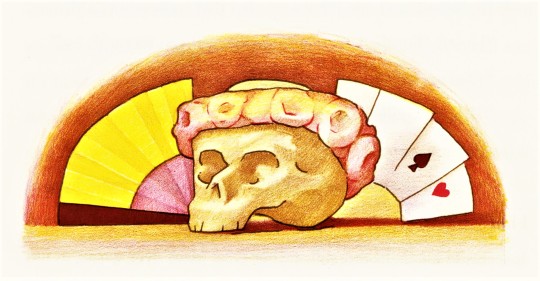
Fine Press Friday!
Our Limited Editions Club Shakespeare series keeps giving us more artists to look for in our collection! This week we found Carmen, by Prosper Mérimée (1803-1870) illustrated by French-born American painter and illustrator, Jean Charlot (1898-1979), published by the Limited Editions Club, New York, in 1941 in an unstated limited edition of 1500 copies signed by the artist. We learned about this edition because of the post we did a couple of weeks ago on Charlot’s illustrated edition of Shakespeare’s Henry VI, Part 3.
Mérimée’s 1846 novel about the eponymous Romani beauty, is most popularly well known from Georges Bizet’s famous opera of the same name, which is based on Part III of Mérimée’s story. The action is set in 1830s Andalusia, but Jean Charlot’s illustrations gives the story a Mexican flavor. Charlot worked mainly in Mexico and was a member of the Mexican Muralist Movement, sharing a studio with Fernando Leal who is considered to be one of the first Mexican Muralists. It was after the Mexican Revolution (1910-1917) that the new government sought to use murals to educate the public on social justice issues. From a young age, Charlot was fascinated by Mexican art and pre-Columbian artefacts and his mature work reflects this fascination, including in these illustrations.
The thirty-seven multi-layered color lithographs, which Charlot drew directly on the printing matrix, feel like miniature frescoes. Charlot laid down quick marks to color large areas of the image, which layer in overlapping color to give the image a lively energy. One could easily imagine one of the illustrations used as a page header as a mural above a doorway, signaling a transition. Or, one of the larger full-page illustrations as a mural on a large wall. I am taken by how these illustrations function well in both architectural and book spaces. The book is architecture.
The lithographs were printed by Charlot’s friend Albert Carman in New York and the type is 18-point Linotype Bodoni printed by Aldus Printers in New York. . The paper was made by the Worthy Paper Company, was watermarked with the name of the book and the covers are wrapped in a vibrant hand-blocked color silk.
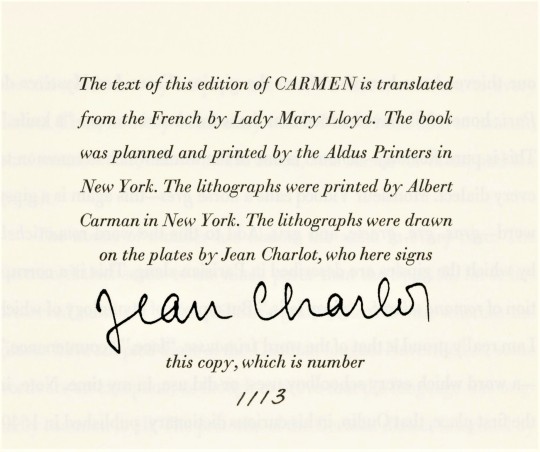
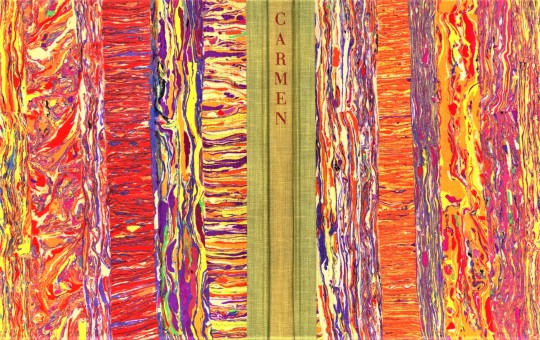
View more Limited Edition Club posts.
View more Fine Press Friday posts.
– Teddy, Special Collections Graduate Intern
#Fine Press Friday#Jean Charlot#Carmen#Prosper Merimee#Lithographs#color lithographs#Lithography#Limited Editions Club#LEC#Mexican Muralists#Murals#Mexican artists#American Artists#French Artists#Lady Mary Lloyd#Albert Carman#Aldus Printers#Fine press books#Linotype Bodoni#Bodoni type#Worthy Paper Company
61 notes
·
View notes
Photo
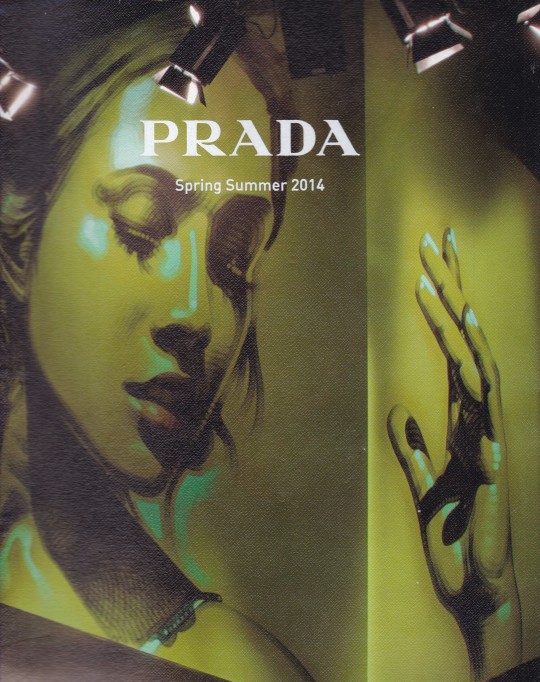


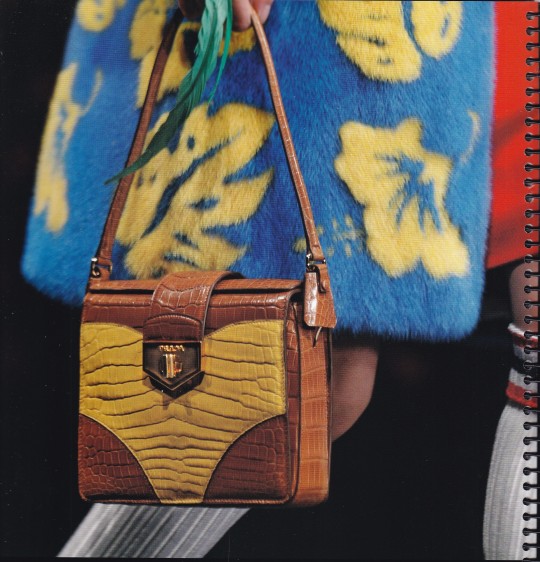
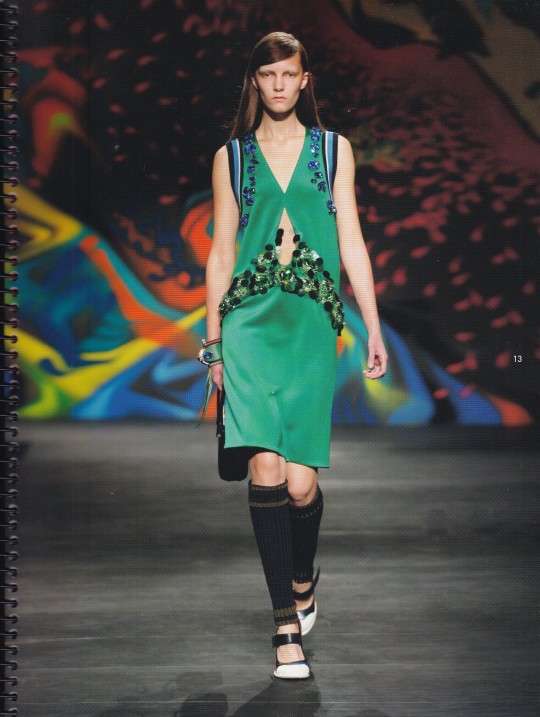
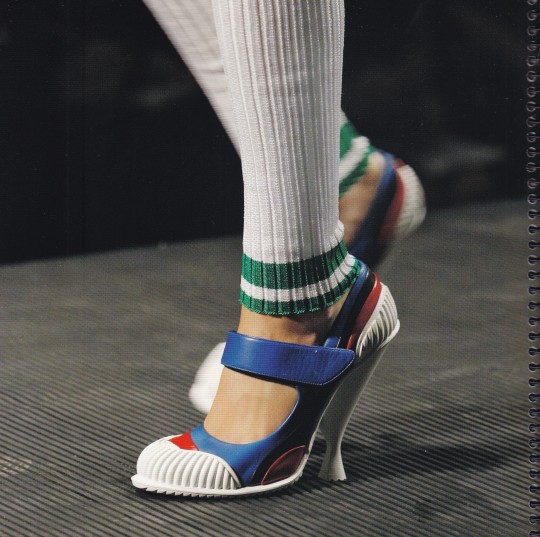
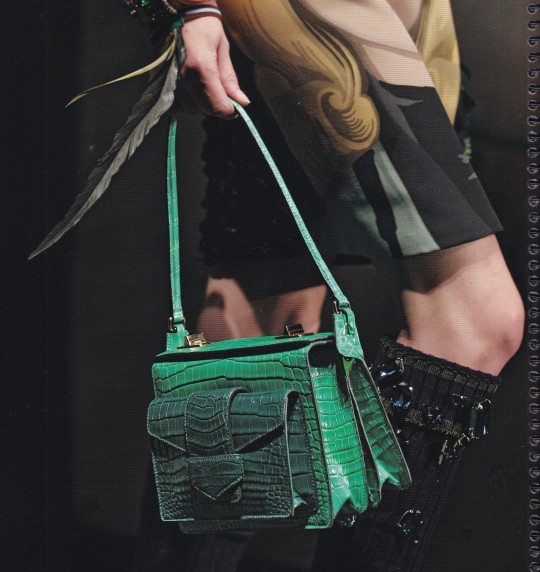
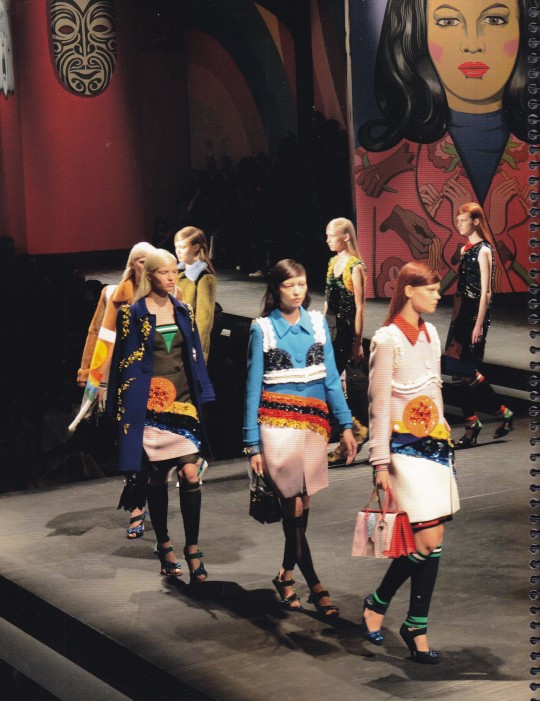
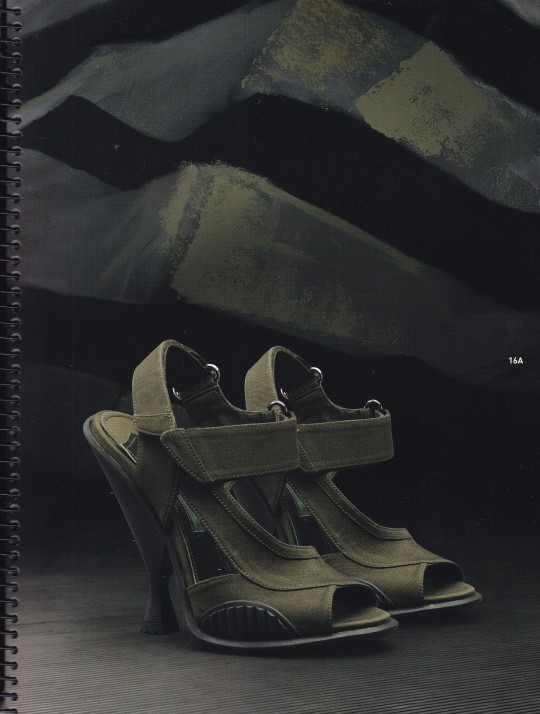

Prada Spring Summer 2014
Prada, Milano 2013, 188 pagine, 24 x 28 cm
euro 90,00
email if you want to buy [email protected]
Prada to present “In the Heart of the Multitude”, featuring the work of four muralists and two illustrators on the walls of the S/S14 Women's fashion show On September 19, 2013, Prada will present In the Heart of the Multitude, a new project in their long tradition of creative collaborations. As part of the environment for the Spring/Summer 2014 Women's fashion show, Prada invited muralists Miles “El Mac” Gregor, Mesa, Gabriel Specter, and Stinkfish, and illustrators Jeanne Detallante and Pierre Mornet, to engage themes of femininity, representation, power, and multiplicity on the walls of the Via Fogazzaro show space in Milan. The concept originated from an interest in the political wall art from Mexican muralists such as Diego Rivera, David Alfaro Siqueiros and José Clemente Orozco combined with on-going exploration into large-scale wall installations at the Prada Broadway epicenter and other sites worldwide. In conjunction with 2x4, the New York-based design firm and long-time creative collaborator, Prada conducted a global research and commissioned these six young artists and illustrators, known for their distinctive style, color sensibility and approach to figurative representation, to work directly in the show space. The walls were reshaped to maximize the structural variation and provide multiple planes on which the artists could realize their visions.
orders to: [email protected]
twitter: @fashionbooksmi
flickr: fashionbooksmilano
instagram: fashionbooksmilano
tumblr: fashionbooksmilano
12/02/23
#Prada#Spring Summer 2014#women's fashion catalogue#Mexican muralists#fashion collection catalogue#fashion books#fashionbooksmilano
11 notes
·
View notes
Text


Frida Kahlo, Girl with Death Mask, 1938
Diego Rivera, detail, Dream of a Sunday Afternoon in Alameda Central Park (Sueño de una tarde dominical en la Alameda Central), 1947
#frida kahlo#diego rivera#skull in art history#mexican surrealism#mexican muralist#mexican artists#mexican painting#Mexican art history#Mexican painters#skull aesthetic#skull art#aesthetic#beauty#memento mori#modern art#art history#tumblr art#surrealism#surrealist#tumblraesthetic#tumblrpic#tumblrpictures#tumblrstyle#artists on tumblr#aesthetictumblr
54 notes
·
View notes
Text


Diego Rivera (Mexican, 1886-1957) • Self-portrait: The Ravages of Time • 1949 • Private collection
#art#art history#self portrait#painting#oil painting#artist as subject#artwork#diego rivera#mexican artist#muralist#the canvas mirror art blog#art blogs on tumblr#art lovers on tumblr#artist signature
14 notes
·
View notes
Text
every now and then i will have a thought about the 70s and then spontaneously combust into a thousand fla[gets dragged away by security]
#chicano was originally a slur towards mexican americans but was reclaimed during the 60s-70s during the california strikes#back then students were also mostly just taught about white history (or black if they were lucky) but never their own#so protests and calls to learn their own history was made which also resulted in heavy pride within themselves#you'll also see a lot of indigenous pride when it comes to the chicano movement back in the day#especially if you look at the murals which have a lot of inspiration derived from mexican catholicism and indigenous imagery#(which is a little ironic to me considering mexico doesn't exactly treat their indigenous population well but i digress 🫠🫠)#then we also have chicano park which is also one of the biggest icons of chicano history#it was built back in the 60s but split up a neighorhood-- the government promised to build a park to compensate but eventually the folks li#-ing there found out they were going to turn it into a patrol station instead and protested in 1970#eventually chicano park was built and after it opened a shit ton of murals came up because at the time there was the chicano mural movement#and a muralist proposed letting others paint on the walls since a lot of the structures built happened to be pretty good canvases#this is all kinda basic history and you could easily look most of this up lmao#i just like rambling#anyways thats my time folks security is eyeing me like they're about to ban me okay b[Electric Taser SFX]#pyro screams to the abyss
3 notes
·
View notes
Photo
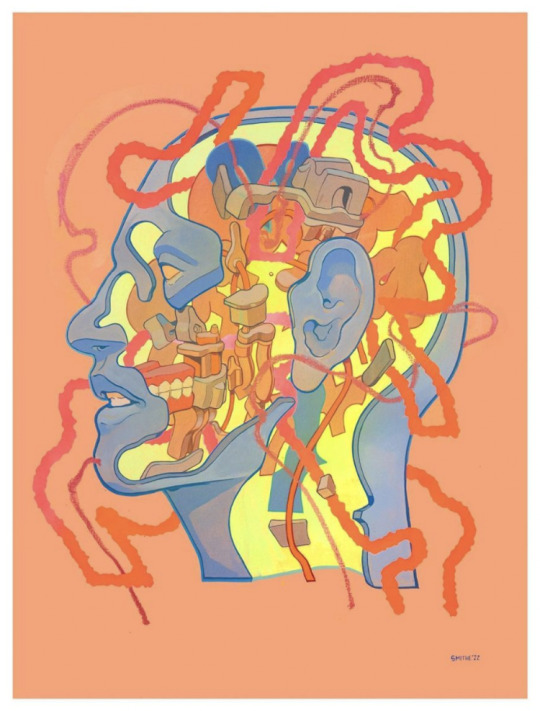
Smithe is the "Savant"
Smithe is a Méxican illustrator & muralist currently based in Mexico City. He is influenced by old local comics, graphic style of the 50's, Japanese anime and Sci-Fi movies. At the age of 13, Smithe began painting graffiti for fun and as a hobby.
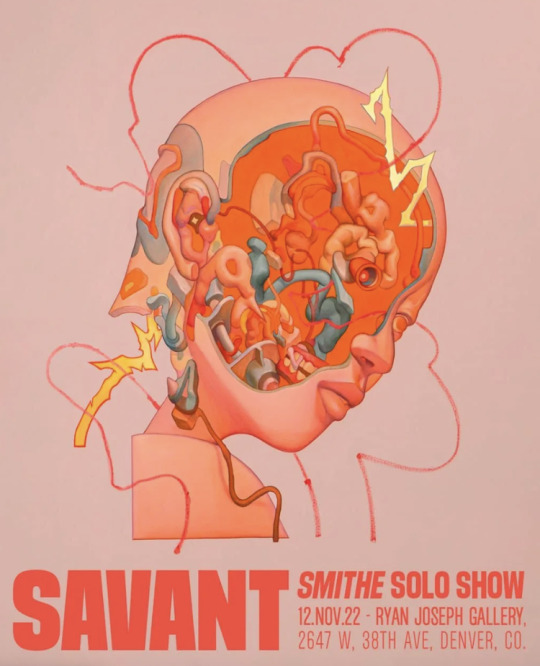
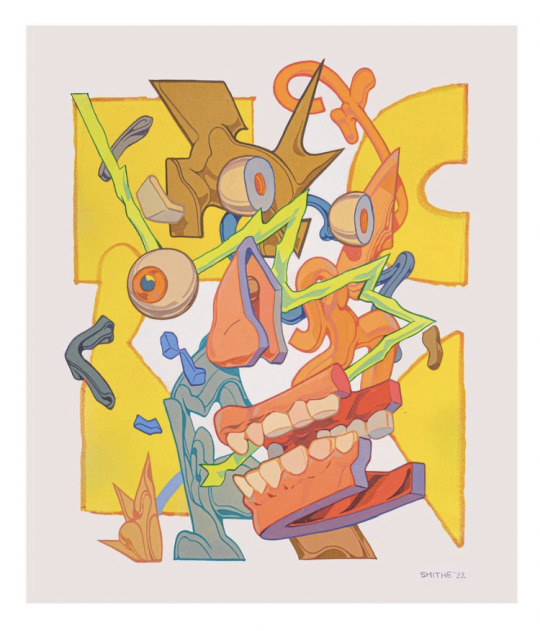
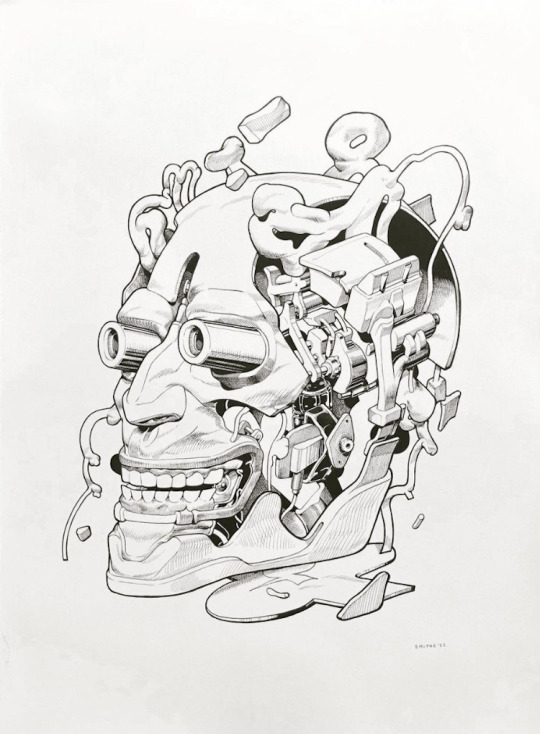
#smithe#artist#art#mexican illustrator#muralist#mexico city#japanese anime#graphic styles of the 50's#sci-fi movies
1 note
·
View note
Note
hi, love your work a lot! it manages to blend coherence with layers of esoterica, in a fun & meaningful way. do you have any big influences with your style?
Writing this as a narrative because my whimsicall mind can't seem to organize information logickally otherwise
So
When I was a child my Dad would show me a lot of comics/cartoons in all different styles/eras and so I was internalizing comic book logic from the very beginning. He really liked American comix both capes and Indie stuff but was also into franco belgian artists and let's be clear my papa has good taste so I was readying good stuff though I couldn't remember it all too reliably... Also Comics Journal, so I was reading comics & meta about comics. So basically I have like a deep archetypal brain stem dark spring of mind that spits out raw comic information like a dream that I can't place until I rediscover them, and a lot of deep unremembered imprintations that R kinda roiling around under the surface #Stupidsoldier
N then I was a deviantart kiddo and a reading manga at barnes and noble kiddo, and then I went and got a formal art education and learned about all these artists that sort of did pseudo comics or cartoons but didnt articulate it that way-- The German xpressionists are a big example of this -- and also about overall principles of like scale and hierarchy and time and presence -- and also just that I really like drawin the human figure in particular :)
I'm really grateful that my parents especially my dad were actually really supportive/invested in me being an artist even though they had very little faith in my character or overall competence. so I was always doing art activities to make me better at drawing because that was like the one redeeming quality I had, a lot of household resources went into me having art tutoring or doing community classes, and I was really strongly encouraged to get ma BFA
So 4 influences well I like things that are very stylish but very specific in how they represent figure N physiognomy... Naoki Urosawa & Jeff Smith were fascinations 2 me along this line... Arakawa is good too... I feel like this is a strength of American and British cartoonists generally but struggling to think of names
My favorite painter is tied between two commies: Siqueiros, who was a Mexican muralist and chaotic socialist, really specific markmaking and texture, pathos drenched figuration, charged epic landscapes, and Petrov-Vodkin, Russian ikonographer who became a propagandist for the USSR, semi-social-realist, semi-ikonographic compositions in which space is wrapping around itself to organize human figures according to a mythological logic, flattish, very cartoons/comics aligned, strange treatment of color but all really effective
History painting overall is everything to me it really doesn't show in Coward but I think it shows elsewhere some of my other dramatic sensibility is a lot from 00s action movie shlock which I would always enjoy to go see when I was younger and was somehow fascinated with the environment of government buildings and prisons and secret operations happeningunder the surface of every day life erupting into wet violence of men punching each other
I love the movie THE RAID redemption !!!!
I learned a lot of the logic of pacing N building pages around Tezuka's work as well as FMA N Death Note I think were big 1s to teach me that logic. Tezuka is a really good artist to look at for how to compose a page that supports the energy of the events that are happening on it, not that that's something I personally am good at. Favorite mangaka for tone and environment and visual identity are Katsuhiro Otomo, Tustomu Nihei, Suehiro Maruo, Nishioka siblings, Hideshi Hino
A lot of my sense of timing is also from news paper strips tbh. It's just a gut thing to me at this point hehe , Character design is also a gut thing for me I draw a little thing and I can either ensoul it with psychosexual fixation or I can't
I was born in the hospital Henry Darger worked at St. Joe's he's an ancestor to me but ofc inimitable by virtue of GOD being his sole audience
As for the esoterickal dimensions I feel like it's all it's own post let's just say I lack the inclination and ability for systematic and rigorous study but I am really interesting in gathering little packets of information and arranging them into dioramas and the longer I do it the more packets I accrue
I want to make a list of artists on here that I like/admire sometime too but that's too much for me rn. I also suspect a lot of people R mad at me for arbitrary reasons just as I also am mad at a lot of people for arbitrary reasons so I dont wanna bother no one ...
Oh well so I'm intentionally reorganizing how I draw right now because I sense a shift in my trajectory again so thanks for making me reflect
91 notes
·
View notes
Text

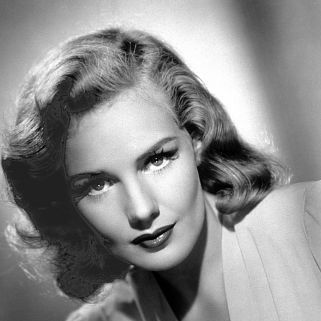
Propaganda
María Félix (Doña Barbara, La Mujer sin Alma, Rio Escondido, La Cucaracha)—Maria Felix is still possibly the most well-known Mexican film actress. She turned down multiple-roles in Hollywood and a contract with Metro-Goldwyn-Meyer in order to take roles in Mexico, France, and Argentine throughout the 1940s, 50s, 60s. She was so famous and so respected as a dramatic actress that she inspired painters, novelists and poets in their own art--she was painted by Diego Rivera, Jose Orozco, Bridget Tichenor. The novelist Carlos Fuentes used her as inspiration for his protagonist in Zona Sagrada. She inspired an entire collection by Hermes. In the late 1960s Cartier made her a custom collection of reptile themed jewels. She considered herself to be powerful challenger of morality and femininity in Mexico & worldwide--she routinely played powerful women in roles with challenging moral choices and free sexuality. But even still, years after he death, she is celebrated with Google Doodles, and appearances in the movie Coco, and holidays for the anniversary of her death.
Frances Farmer (Among the Living)— has multiple songs written about her, a mentally ill icon, sexy as fuck and a feminist icon
This is round 1 of the tournament. All other polls in this bracket can be found here. Please reblog with further support of your beloved hot sexy vintage woman.
[additional propaganda submitted under the cut]
María Félix:

She's Thee Hot Vintage Movie Woman of México. She's absolutely gorgeous and always looks like she's about to step on you. you WILL be thankful if she does.
"María Félix is a woman -- such a woman -- with the audacity to defy the ideas machos have constructed of what a woman should be. She's free like the wind, she disperses the clouds, or illuminates them with the lightning flash of her gaze." - Octavio Paz
María Félix is one of the most iconic actresses of the Golden Era of Mexican Cinema. La Doña, as she was lovingly nicknamed, only had one son, and when her first marriage ended in divorce her ex-husband stole her only child, so she vowed that one day she’d be more influential than her ex and she’d get her son back. AND SHE DID! María Félix rejected a Hollywood acting role to start her acting career in Mexico on her own terms with El Peñón de las Ánimas (The Rock of Souls) starring alongside actor, and future third husband, Jorge Negrete. She quickly rose to incredible heights both in Mexico and abroad, later on rejecting a Hollywood starring role (Duel in the Sun) as she was already committed to the movie Enamorada at the planned filming time. Of this snubbing she said, quote: “I will never regret saying no to Hollywood, because my career in Europe was focused in [high] quality cinema. [My] india* roles are made in my country, and [my] queen roles are abroad.” (Translator notes: here the “india” role means interpreting a lower-class Mexican woman, usually thought of indigenous/native/mixed descent —which she had interpreted and reinvented throughout her acting career in Mexico— and what abroad was typically considered the Mexican woman stereotype, with the braids, long simple skirts, and sandals. This also references the expectation of her possibly helping Hollywood in perpetuating this stereotype for American audiences that lack the cultural and historical contexts of this type of role which would undermine her own efforts against this type of Mexican stereotypes while working in Europe) She was considered one of the most beautiful women in the world of her time by international magazines like Life, París Match, and Esquire, and was a muse to a vast number of songwriters (including her second husband Agustin Lara,), artists, designers, and writers. Muralist Diego Rivera described her as “a monstrously perfect being. She’s an exemplary being that drives all other human beings to put as much effort as possible to be like her”. Playwriter Jean Cocteau, who worked with her in the Spanish film La Corona Negra (The Black Crown) said the following about her, “María, that woman is so beautiful it hurts”. Haute Couture houses like Dior, Givenchy, Yves Saint Laurent, Balenciaga, Hérmes, among others, designed and dressed her throughout her life. She died on her birthday, April 8, 2002, at 88 years old, in Mexico City. She was celebrated by a parade from her home to the Fine Arts Palace in the the city’s Historic Downtown, where a multitude of people paid tribute to her. Her filmography includes 47 movies from 1942 until 1970, and only two television acting roles in 1970. She has 2 music albums, one recorded with her second husband, Agustín Lara, in 1964 titled La Voz de María y la inspiración de Agustín «The voice of María and the inspiration of Augustín», and her solo album Enamorada «In Love» in 1998. Her bespoke Cartier jewelry is exhibited alongside Elizabeth Taylor’s, Grace Kelly’s and Gloria Swanson’s. In 2018, Film Director Martin Scorsese presented a restored and remastered version of her film Enamorada in the Cannes Classics section of the Cannes Festival and Google dedicated a doodle for her 104th birthday. On august 2023 Barbie added her doll to the Tribute Collection.

125 notes
·
View notes
Text
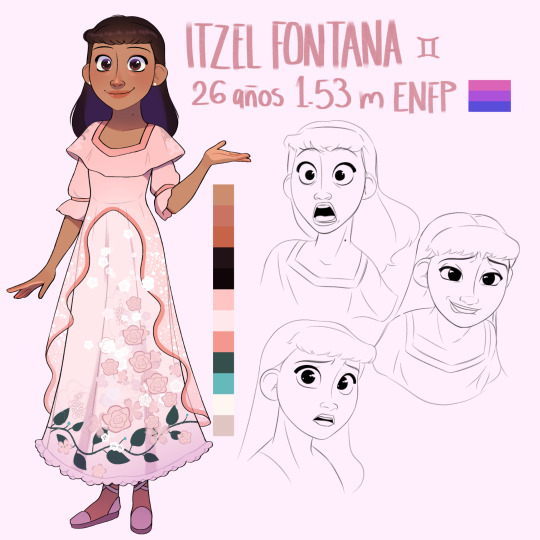
week 1: introduction
Background
Her full name is Verónica Itzel Fontana Aguilar, she's a mexican-colombian girl. Her parents arrived at El Encanto when they were kids with the group of people in which Pedro and Alma were. Her father's family, the Fontanas, are horsemen from Sinaloa, and fled Mexico during the Porfiriato. Her mother is from Yucatan, and unfortunately, was orphaned shortly before arriving in town, and she and her younger sister were adopted by the Fontana family. They work raising horses and selling them. Their business is well established in the town, and they're one of the most important families in there. Anyways, they're not friends with the Madrigals, and only interact with them whenever they need something. Itzel is the eldest of two children in the Fontana-Aguilar family.
Despite having a normal childhood, Itzel was a lonely child. Her father worked all day in the stables, so he didn't spend time with her; her mother only worked until noon 'cause she's a teacher, but she just couldn't stand her own child, and sent her to her room to keep her away from her. Itzel was a restless and energetic girl, so this affected her a lot, making her look outside her family circle for the attention that she wasn't given at home.
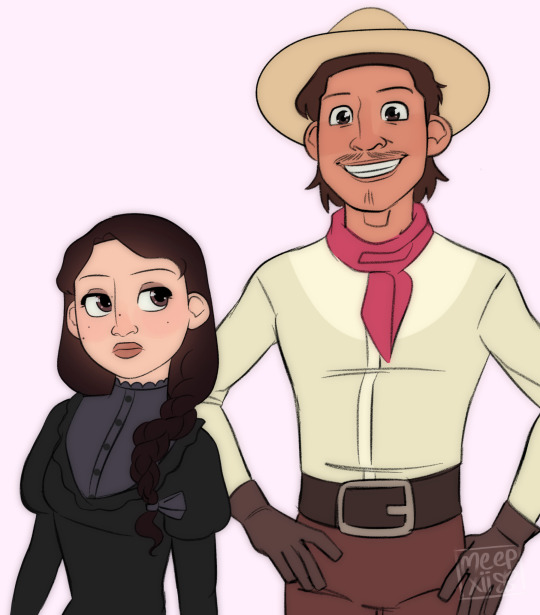
Itzel's parents in their twenties.
Personality
Itzel is a kind person and has good feelings, but she's very disconnected from her own emotions and her environment, which makes her quite impulsive. Even so, the emotions Itzel feels are very intense, and is a hopeless romantic. She collapses easily, and crying is her way of channeling her anger, happiness, or sadness. She's also a theater kid, and tends to unconsciously create her own problems by believing herself to be the protagonist of her own soap opera/novela. She really likes to grab the spotlight, and knows she's pretty, so she takes advantage of this to get what she wants. Sometimes this attitude of hers gets her into trouble.
Her savior complex and her lack of judgment when in love always make her get into toxic relationships.
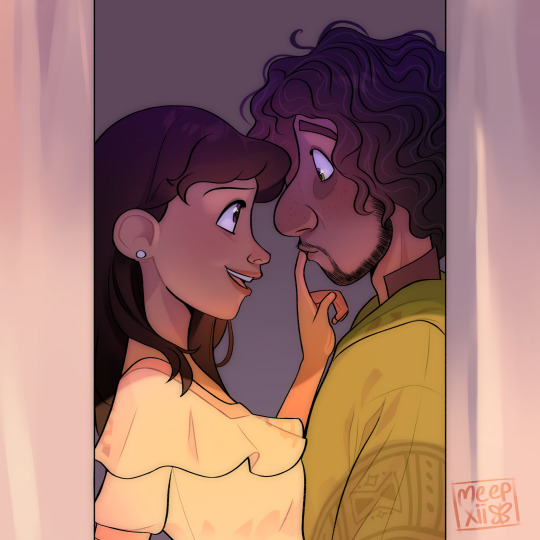
Her theme song:
Occupation
Since she was a child, Itzel showed special interest in art and knew she definitely wanted to be an artist. When she expressed her desire of devoting her life to art, her parents objected, arguing that a woman couldn't choose that occupation. However, they didn't stop her either, she did what she wanted, and fulfilled her dream anyway. She is the town muralist, and makes oil paintings as well. Her parents began to support her when they saw that she could actually make a living from it.
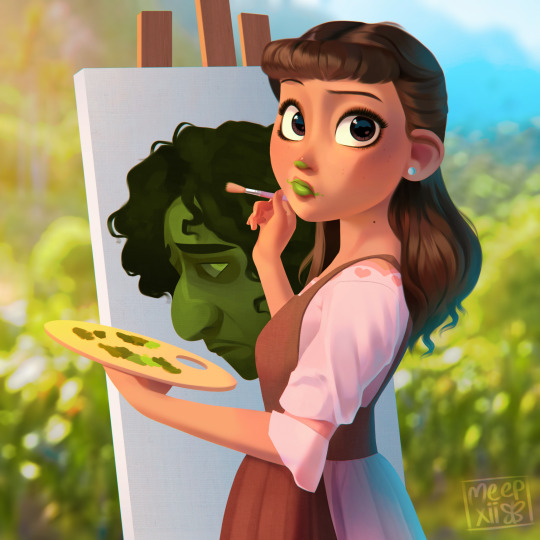
Outfits
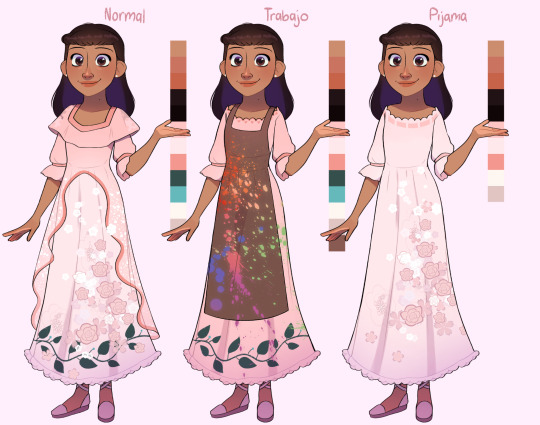

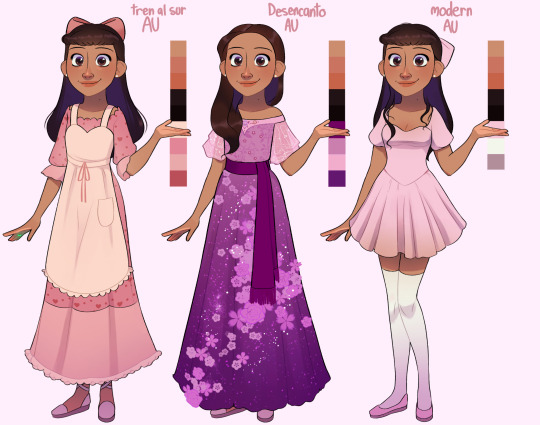
Age progression
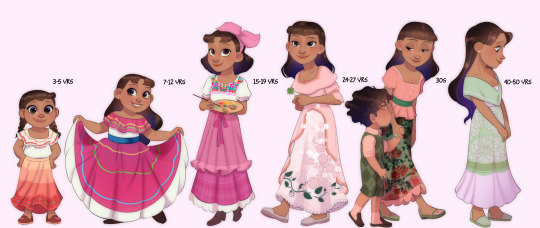
i'm super late for week one 😭 i had to fix some things on her character sheet, but here she is!
@encanto-extended-edition
#encanto#encanto oc appreciation#encanto oc#encanto oc event#oc x canon#bruno x oc#itzel fontana#original character
186 notes
·
View notes
Text
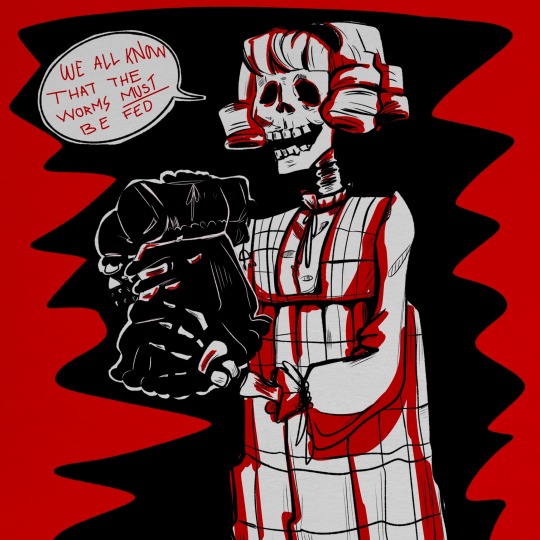
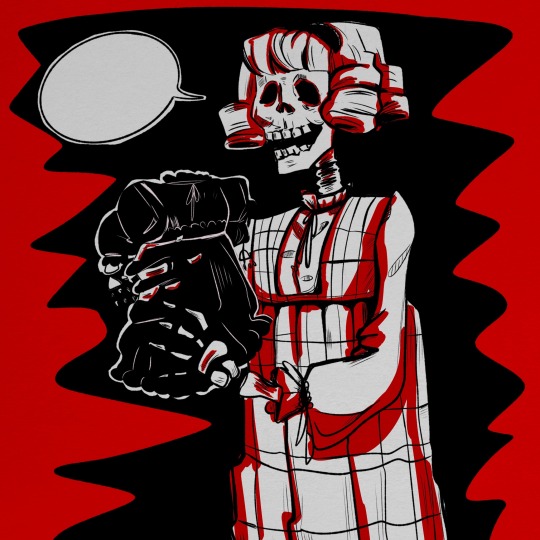
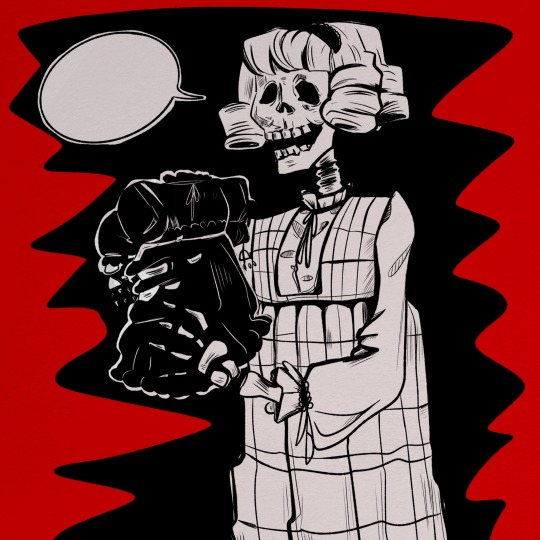
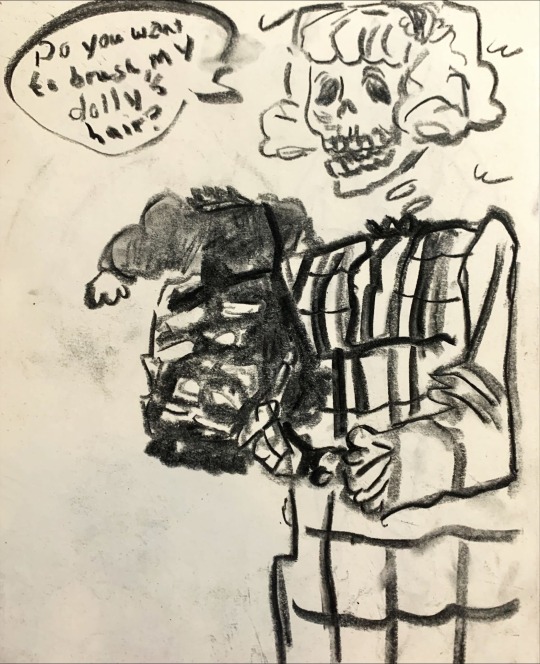

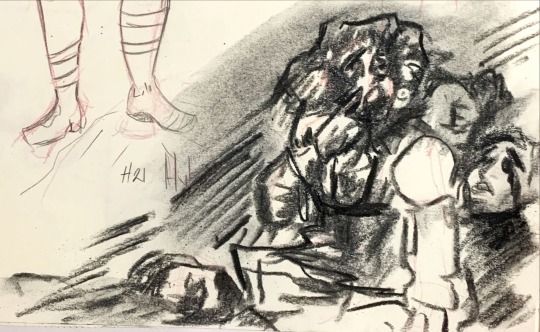
This is day 10 for @ride-the-cyclober
Scary/weird Halloween Jane doe
The first one is an ode to the Mexican muralist José Guadalupe Posada, creator of La Catrina
And the last one is kinda disturbing ngl, basically if Jane decided to replace her head with the choir’s(they don’t think she’s quite silly)
#ride the cyclone#rtc#jane doe ride the cyclone#jane doe#rtc jane doe#jane doe rtc#rtc fanart#ride the cyclober#ride the cyclone fanart#art tag
127 notes
·
View notes
Text

Diego Rivera, Delfina Flores, 1927, oil/canvas (McNay Art Museum, San Antonio)
10 notes
·
View notes
Text

Honoré Sharrer, Workers and Paintings, 1943. Oil on board. Click/tap to enlarge.
Sharrer worked downtown, near Manhattan’s Union Square, but shared with her Harlem peers a desire to celebrate “ordinary people.” “It is these distinguished-undistinguished players,” she said, “that moved and interested me.” Sharrer depicts American families presenting and reacting to well-known paintings, including Grant Wood’s iconic American Gothic (1930) and Pablo Picasso’s Girl before a Mirror (1932). In different ways, most of the artists she chose to represent here—including the French realist Jean-François Millet and the Mexican muralist Diego Rivera—were known for their sympathetic portrayals of working people. … Many decades later, the poet John Ashbery praised her paintings, describing their meticulous style as "a collaboration between Norman Rockwell and the brothers van Eyck." (MoMA)
The insight and modernity of “Workers and Paintings”—not to mention the meta nature—are startling. Throughout Western history, visual art has often been the domain of the educated or moneyed elite. Even when artists like Gustave Courbet broke new ground by depicting working-class people, the art itself still wasn’t meant for them. With her imagination and a careful brush, Ms. Sharrer casts aside thousands of years of tradition and poses a question: what if great art were more accessible to ordinary people? What if we could not only look at it in passing, but spend time or even live with it? With the painting hanging at MoMA, the challenge expands: what if museums weren’t intimidating and costly but more welcoming and inclusive? (Jillian Steinhauer in the NY Times)
Photo: NY Times
#vintage New York#1940s#Honoré Sharrer#painting#NY art#Workers and Paintings#American art#Harlem artists#vintage Harlem#African-American art#vintage NYC#pintura
18 notes
·
View notes
Photo


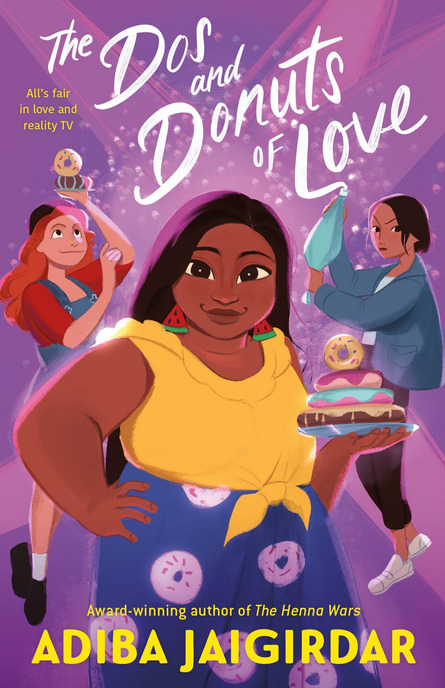
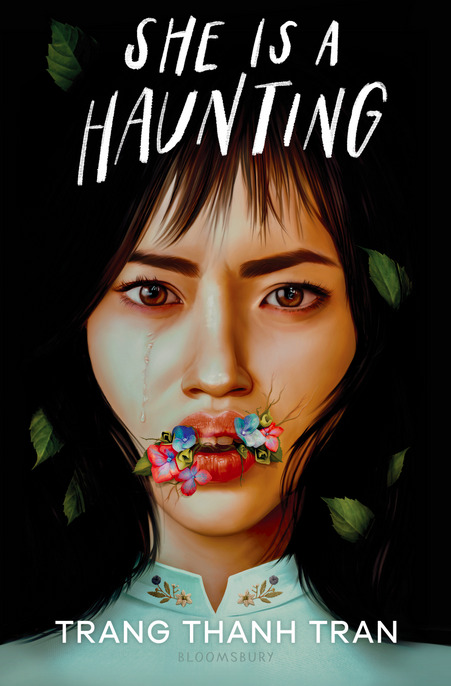



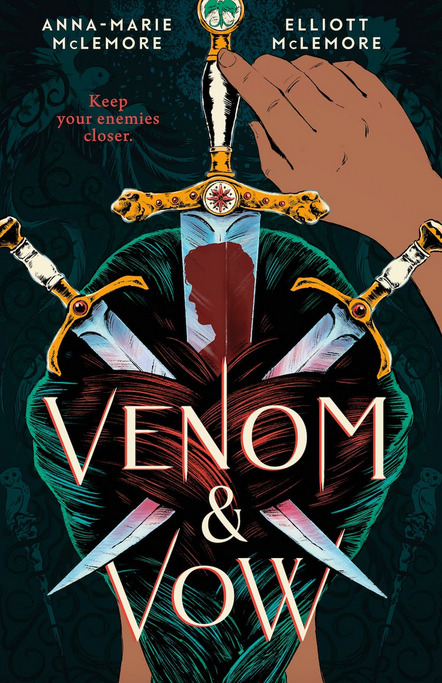
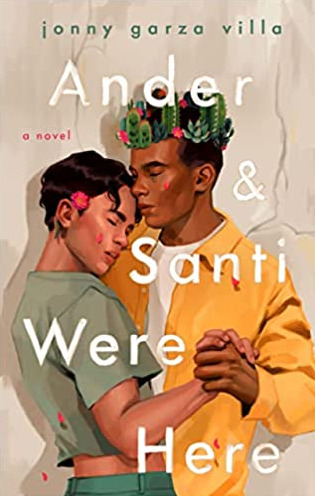
9 QTPoC books for your 2023 Pride Month TBR
Happy Pride Month! Every year, I do a little round-up of YA books starring LGBTQ and BIPOC characters that have come out so far this year. This year was particularly exciting -- there were so many books that I loved or have at the very top of my TBR! So, without further ado, here's 9 of them for your TBR!
The Wicked Bargain by Gabe Cole Novoa El Diablo is in the details in this Latinx pirate fantasy starring a transmasculine nonbinary teen with a mission of revenge, redemption, and revolution.
On Mar León-de la Rosa's 16th birthday, el Diablo comes calling. Mar is a transmasculine nonbinary teen pirate hiding a magical ability to manipulate fire and ice. But their magic isn't enough to reverse a wicked bargain made by their father and now el Diablo has come to collect his payment: the soul of Mar's father and the entire crew of their ship. When Mar is miraculously rescued by the sole remaining pirate crew in the Caribbean, el Diablo returns to give them a choice: give up your soul to save your father by the Harvest Moon or never see him again. The task is impossible--Mar refuses to make a bargain and there's no way their magic is any match for el Diablo. Then, Mar finds the most unlikely allies: Bas, an infuriatingly arrogant and handsome pirate -- and the captain's son; and Dami, a genderfluid demonio whose motives are never quite clear. For the first time in their life, Mar may have the courage to use their magic. It could be their only redemption -- or it could mean certain death.
Fake Dates and Mooncakes by Sher Lee Heartstopper meets Crazy Rich Asians in this heartfelt, joyful paperback original rom-com that follows an aspiring chef who discovers the recipe for love is more complicated than it seems when he starts fake-dating a handsome new customer.
Dylan Tang wants to win a Mid-Autumn Festival mooncake-making competition for teen chefs—in memory of his mom, and to bring much-needed publicity to his aunt’s struggling Chinese takeout in Brooklyn.
Enter Theo Somers: charming, wealthy, with a smile that makes Dylan’s stomach do backflips. AKA a distraction. Their worlds are sun-and-moon apart, but Theo keeps showing up. He even convinces Dylan to be his fake date at a family wedding in the Hamptons. In Theo’s glittering world of pomp, privilege, and crazy rich drama, their romance is supposed to be just pretend... but Dylan finds himself falling for Theo. For real. Then Theo’s relatives reveal their true colors—but with the mooncake contest looming, Dylan can’t risk being sidetracked by rich-people problems.Can Dylan save his family’s business and follow his heart—or will he fail to do both?
Ander & Santi Were Here by Jonny Garza Villa Aristotle and Dante meets The Hate U Give meets The Sun Is Also A Star: A stunning YA contemporary love story about a Mexican-American teen who falls in love with an undocumented Mexican boy.
Finding home. Falling in love. Fighting to belong. The Santos Vista neighborhood of San Antonio, Texas, is all Ander Martínez has ever known. The smell of pan dulce. The mixture of Spanish and English filling the streets. And, especially their job at their family's taquería. It's the place that has inspired Ander as a muralist, and, as they get ready to leave for art school, it's all of these things that give them hesitancy. That give them the thought, are they ready to leave it all behind?
To keep Ander from becoming complacent during their gap year, their family "fires" them so they can transition from restaurant life to focusing on their murals and prepare for college. That is, until they meet Santiago López Alvarado, the hot new waiter. Falling for each other becomes as natural as breathing. Through Santi's eyes, Ander starts to understand who they are and want to be as an artist, and Ander becomes Santi's first steps toward making Santos Vista and the United States feel like home. Until ICE agents come for Santi, and Ander realizes how fragile that sense of home is. How love can only hold on so long when the whole world is against them. And when, eventually, the world starts to win.
She Is a Haunting by Trang Thanh Tran A house with a terrifying appetite haunts a broken family in this atmospheric horror, perfect for fans of Mexican Gothic.
When Jade Nguyen arrives in Vietnam for a visit with her estranged father, she has one goal: survive five weeks pretending to be a happy family in the French colonial house Ba is restoring. She’s always lied to fit in, so if she’s straight enough, Vietnamese enough, American enough, she can get out with the college money he promised. But the house has other plans. Night after night, Jade wakes up paralyzed. The walls exude a thrumming sound, while bugs leave their legs and feelers in places they don’t belong. She finds curious traces of her ancestors in the gardens they once tended. And at night Jade can’t ignore the ghost of the beautiful bride who leaves her cryptic warnings: Don’t eat.
Neither Ba nor her sweet sister Lily believe that there is anything strange happening. With help from a delinquent girl, Jade will prove this house—the home her family has always wanted—will not rest until it destroys them. Maybe, this time, she can keep her family together. As she roots out the house’s rot, she must also face the truth of who she is and who she must become to save them all.
Venom & Vow by Anna-Marie McLemore, Elliott McLemore Keep your enemy closer.
Cade McKenna is a transgender prince who’s doubling for his brother. Valencia Palafox is a young dama attending the future queen of Eliana. Gael Palma is the infamous boy assassin Cade has vowed to protect. Patrick McKenna is the reluctant heir to a kingdom, and the prince Gael has vowed to destroy. Cade doesn’t know that Gael and Valencia are the same person. Valencia doesn’t know that every time she thinks she’s fighting Patrick, she’s fighting Cade. And when Cade and Valencia blame each other for a devastating enchantment that takes both their families, neither of them realizes that they have far more dangerous enemies.
Cowritten by married writing team Anna-Marie and Elliott McLemore, this is a lush and powerful YA novel about owning your power and becoming who you really are - no matter the cost.
You Don't Have a Shot by Racquel Marie A queer YA romance about rival soccer players from author Racquel Marie, perfect for fans of She Drives Me Crazy .
Valentina “Vale” Castillo-Green’s life revolves around soccer. Her friends, her future, and her father’s intense expectations are all wrapped up in the beautiful game. But after she incites a fight during playoffs with her long-time rival, Leticia Ortiz, everything she’s been working toward seems to disappear.
Embarrassed and desperate to be anywhere but home, Vale escapes to her beloved childhood soccer camp for a summer of relaxation and redemption…only to find out that she and the endlessly aggravating Leticia will be co-captaining a team that could play in front of college scouts. But the competition might be stiffer than expected, so unless they can get their rookie team’s act together, this second chance―and any hope of playing college soccer―will slip through Vale’s fingers. When the growing pressure, friendship friction, and her overbearing father push Vale to turn to Leticia for help, what starts off as a shaky alliance of necessity begins to blossom into something more through a shared love of soccer. . . and maybe each other.
The Dos and Donuts of Love by Adiba Jaigirdar A pun-filled YA contemporary romance, The Dos and Donuts of Love by Adiba Jaigirdar finds a teenage girl competing in a televised baking competition, with contestants including her ex-girlfriend and a potential new crush - perfect for fans of The Great British Bake Off and She Drives Me Crazy!
“Welcome to the first ever Junior Irish Baking Show!”
Shireen Malik is still reeling from the breakup with her ex-girlfriend, Chris, when she receives news that she’s been accepted as a contestant on a new televised baking competition show. This is Shireen’s dream come true! Because winning will not only mean prize money, but it will also bring some much-needed attention to You Drive Me Glazy, her parents’ beloved donut shop.
Things get complicated, though, because Chris is also a contestant on the show. Then there’s the very outgoing Niamh, a fellow contestant who is becoming fast friends with Shireen. Things are heating up between them, and not just in the kitchen. As the competition intensifies, Shireen will have to ignore all these factors and more― including potential sabotage―if she wants a sweet victory!
My Dear Henry by Kalynn Bayron In this gothic YA remix of Dr. Jekyll & Mr. Hyde, a teen boy tries to discover the reason behind his best friend's disappearance—and the arrival of a mysterious and magnetic stranger—in misty Victorian London.
London, 1885. Gabriel Utterson, a 17-year-old law clerk, has returned to London for the first time since his life— and that of his dearest friend, Henry Jekyll—was derailed by a scandal that led to his and Henry's expuslion from the London Medical School. Whispers about the true nature of Gabriel and Henry's relationship have followed the boys for two years, and now Gabriel has a chance to start again. But Gabriel doesn't want to move on, not without Henry. His friend has become distant and cold since the disastrous events of the prior spring, and now his letters have stopped altogether. Desperate to discover what's become of him, Gabriel takes to watching the Jekyll house.
In doing so, Gabriel meets Hyde, a a strangely familiar young man with white hair and a magnetic charisma. He claims to be friends with Henry, and Gabriel can't help but begin to grow jealous at their apparent closeness, especially as Henry continues to act like Gabriel means nothing to him. But the secret behind Henry's apathy is only the first part of a deeper mystery that has begun to coalesce. Monsters of all kinds prowl within the London fog—and not all of them are out for blood...
As You Walk On By by Julian Winters The Breakfast Club meets Can't Hardly Wait with an unforgettable ensemble cast in another swoony YA contemporary from award-winning author Julian Winters!
Seventeen-year-old Theo Wright has it all figured out. His plan (well, more like his dad's plan) is a foolproof strategy that involves exceling at his magnet school, getting scouted by college recruiters, and going to Duke on athletic scholarship. But for now, all Theo wants is a perfect prom night. After his best friend Jay dares Theo to prompose to his crush at Chloe Campbell's party, Theo's ready to throw caution to the wind and take his chances.
But when the promposal goes epically wrong, Theo seeks refuge in an empty bedroom while the party rages on downstairs. Having an existential crisis about who he really is with and without his so-called best friend wasn't on tonight's agenda. Though, as the night goes on, Theo finds he's not as alone as he thinks when, one by one, new classmates join him to avoid who they're supposed be outside the bedroom door. Among them, a familiar acquaintance, a quiet outsider, an old friend, and a new flame . . .
92 notes
·
View notes
Text

José Clemente Orozco
Gods of the Modern World (From The Epic of American Civilization mural)
1932–1934
#josé clemente orozco#muralist#murals#mexican artist#Mexican art#mexican painter#Mexican painting#Mexican muralist#aesthetic#beauty#modern art#art history#aesthetictumblr#tumblraesthetic#tumblrpic#tumblrpictures#tumblr art#tumblrstyle#artists on tumblr#art aesthetic#mexican aesthetic#beauty aesthetic#aesthetic beauty
14 notes
·
View notes
Text

Gregory Ferrand, Mona Lisa: Strictly Respectable (commission)
acrylic on canvas 18"x 24" 2019 (detail).
Gregory Ferrand received a degree in film from Virginia Commonwealth University in 1997 and promptly headed off to Buenos Aires, Argentina to teach English to business people. While living there he kept an illustrated journal in which he experimented with different media and recorded his observations about the culture and people around him. In doing so, he came to understand two things about himself: 1). that he was a painter and 2). that he was fascinated by the subtext of human interactions. He returned to the States in early 2000 and began painting seriously.
Gregory pulls on influences as wide ranging as comics, Mexican muralists, and 1950's fashion to create paintings that reveal the beauty of living. His background in film is evident in the strong use of narrative he employs to tell stories about characters and situations that do, have, and will exist; gently unmasking the psychological or emotional state of the subject, inviting the viewer to share and/or identify.
31 notes
·
View notes